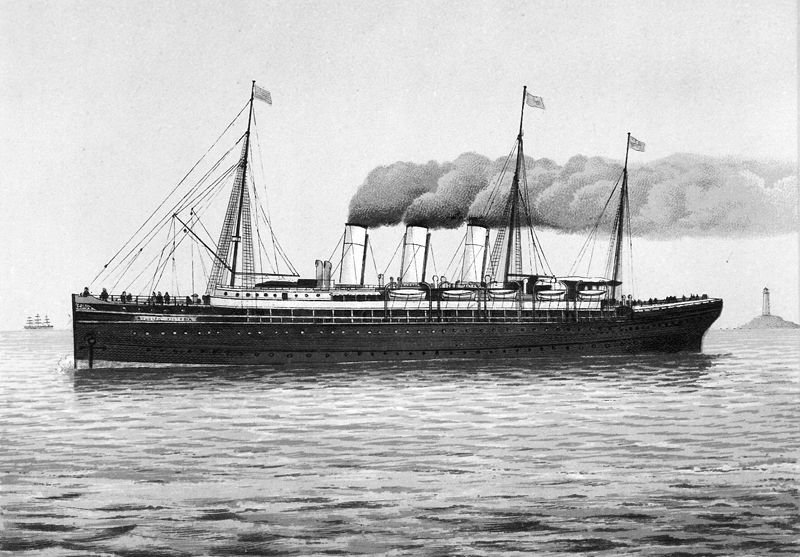Whose Idea Were Cruises, Anyway?
By the 1960s, the cruise ship heyday had come and gone

The Augusta Victoria, which is thought to be the world’s first cruise ship. Photo: “Album von Hamburg”
Recently, headlines about cruise disasters—such as the Costa Concordia disaster last year in which a 4,000-person ship ran aground in Italy and toppled over, costing 32 lives—have sent jitters through the industry. While the number of people taking cruises this year is projected to increase by 3.3 percent this year, more recent stories about passengers being stranded at sea with non-functioning toilets, for example, can’t be good for those numbers. The Chicago Tribune reports:
Carnival Corp said the cruise ship Carnival Dream was stuck in port in St. Maarten after its emergency diesel generator malfunctioned during testing on Wednesday. The liner, among the company’s largest, was on a weeklong cruise and had been due back in Port Canaveral, Florida on Saturday.
The problem caused temporary disruptions to elevator and toilet services but the ship never lost power, the company said, adding that only one public toilet had overflowed.
The latest incident comes two days after Carnival said it had launched a comprehensive review of its entire fleet following a fire that crippled its Carnival Triumph in the Gulf of Mexico last month.
Over the weekend, another Carnival ship, the Carnival Elation, had to get a tugboat escort down the Mississippi River after a mechanical problem.
Meanwhile, since August 2011 cruise ships sailing to Antarctica have seen steep decline in both operating companies and passengers thanks to stricter fuel regulations and public outcry about pollution the vessels were bringing to the South Pole.
Maybe it’s time to put this form of travel to rest. After all, it’s been slowly losing steam for decades. In 1891, the Augusta Victoria set sail from the Mediterranean to the Near East with 241 passengers, marking what is thought today to be the first cruise ever. By 1900, a German designer had caught on to the idea and created the first vessel exclusively for the purpose of cruising. Unlike other ships of her time, the Victoria Luise contained only first class cabins, along with a library, a gym and a dark room for amateur photographers. From there, the luxuries on future ships only became more extravagant, as evidenced by the most famous example, the Titanic.
But by the 1960s, the cruise ship heyday had come and gone. Passengers began opting for planes for their intercontinental travel needs. By the 1980s, cruise ships had abandoned the idea of vessels as a form of transportation, shifting the industry towards vacations at sea instead. That’s now a huge industry, but with all the recent troubles, it might be time to retire the idea of giant, floating hotels. Right after the Titanic II makes it to New York.
More from Smithsonian.com:
Cruise Ship Disaster Arouses Concerns, Memory
The Biggest Cruise Ship in the World
/https://tf-cmsv2-smithsonianmag-media.s3.amazonaws.com/accounts/headshot/Rachel-Nuwer-240.jpg)
/https://tf-cmsv2-smithsonianmag-media.s3.amazonaws.com/accounts/headshot/Rachel-Nuwer-240.jpg)